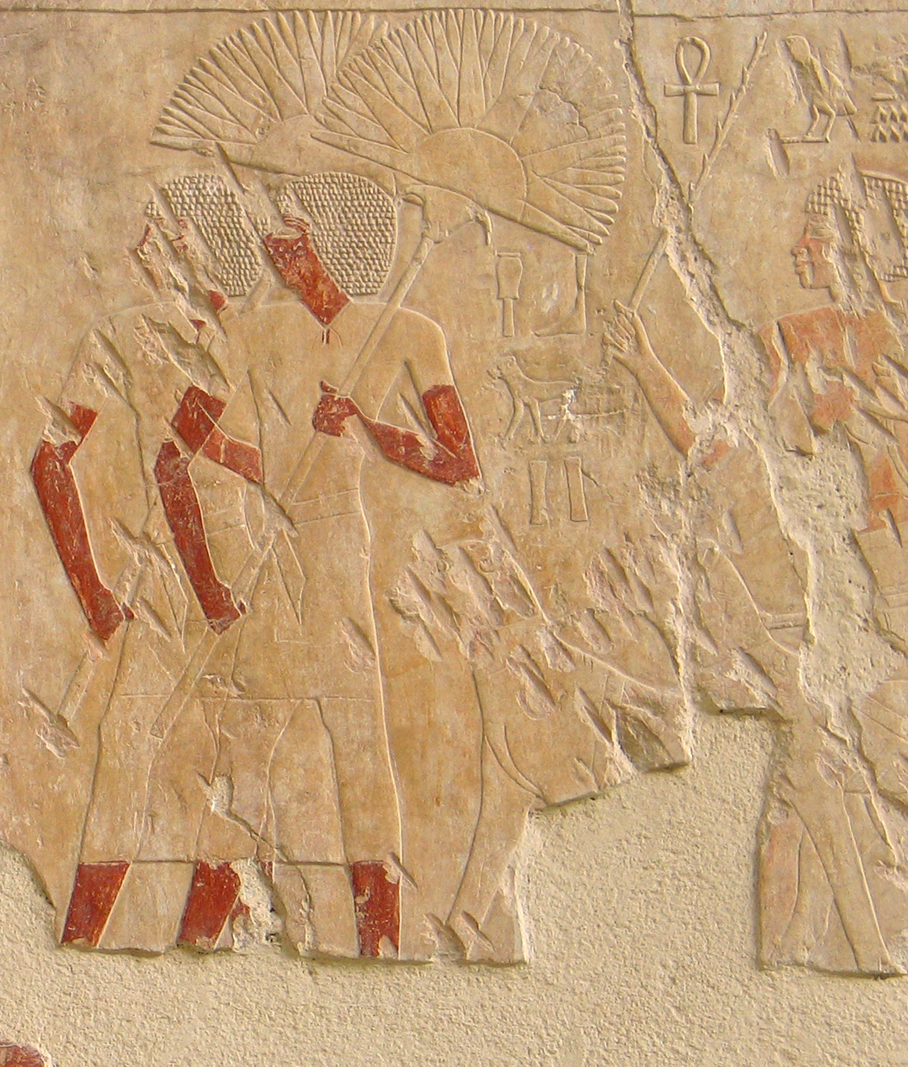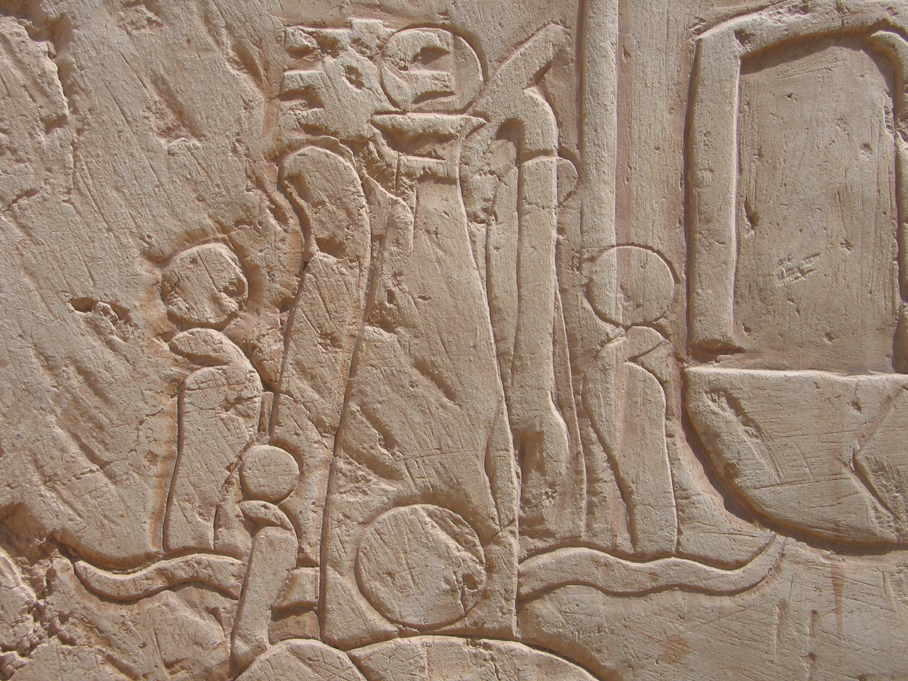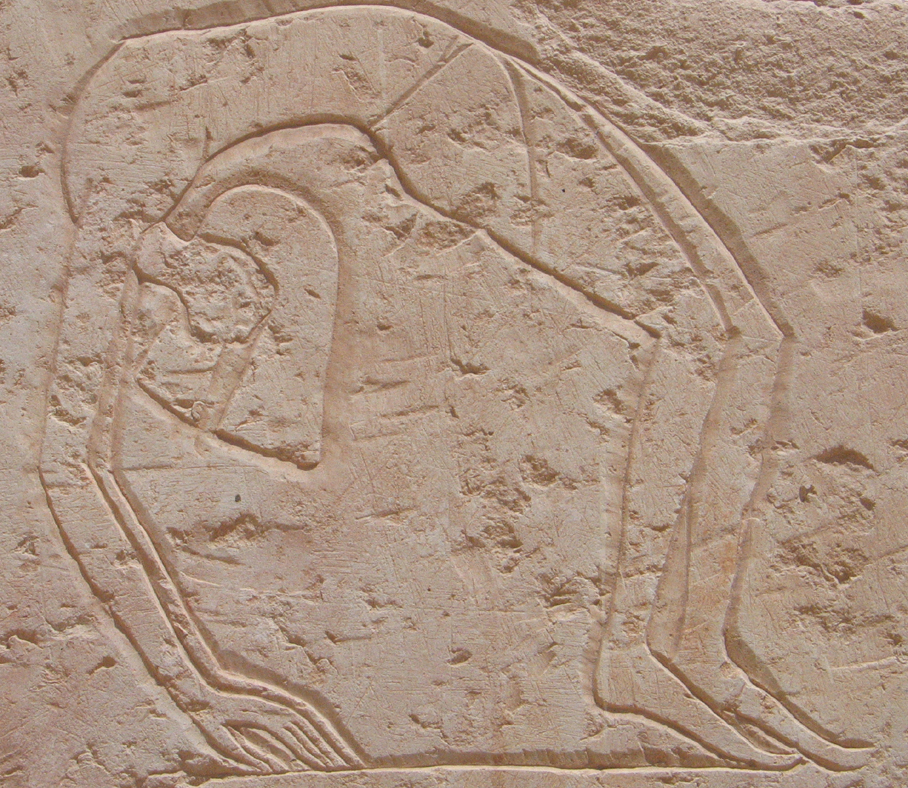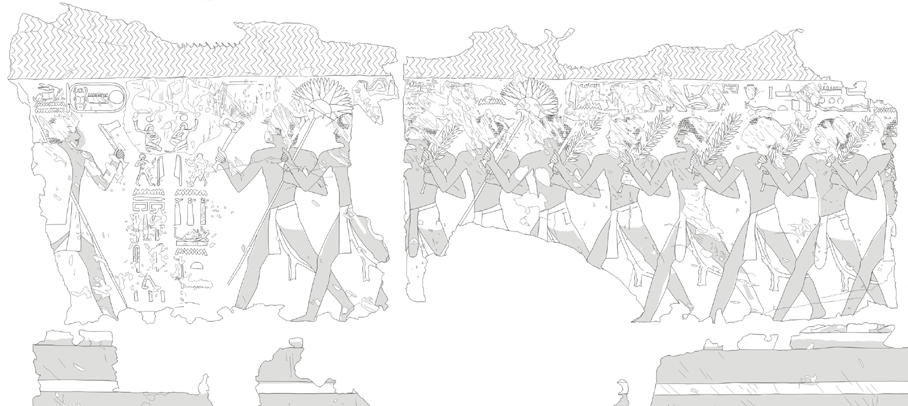News
Representation of the Beautiful Feast of Djeser-Djeseru in the Temple of Hatshepsut at Deir el-Bahari

The documentation and examination project of the northern part of the eastern wall and the northern wall of the Upper Courtyard in the Temple of Hatshepsut at Deir el-Bahari commenced in 2004.
The first stage of the project involved documentation of preserved images and also identifying and incorporating into the reconstruction process the blocks which had not been inserted during the rebuilding of the walls. It was possible to add new fragments thanks to various contributions, e.g. the excavation work carried out every year in the area of the Upper Terrace of the temple.
The drawings were sketched on a transparent foil in scale 1:1. Consecutive stages of decoration were marked and next the documentation was scanned in order to make vector drawings in CorelDraw application. In addition to that, blocks, complete scenes and details were photographed.
The walls in the northern part of the Upper Courtyard bear a representation of a large processional feast. The preserved reliefs make it possible to reconstruct its stages. After offering sacrifices at Karnak, Hatshepsut and Thutmose III assisted the sacred bark of Amun – Userhat in the procession towards the Nile, and then personally steered the river bark of the god, which was accompanied in its crossing to the western bank by a bark with royal statues and two other barks of Thutmose II.
The royal procession was escorted by a procession of soldiers.  At the same time sacrifices were offered, bulls were slaughtered, the throne was carried and the panthers were led. On the western bank the procession headed towards the Temple of Thutmose I, where the bark, after the monarchs had burned incense for it, was placed on a platform with accompaniment of songs and acrobatic dance. The royal ancestors, personified by the royal statues, also acted as companions for the bark. Next, the procession headed to the temple, where, in the Bark Hall, the statue of Amun placed in the naos of the Userhat bark received a huge pile of offerings from the monarchs.
At the same time sacrifices were offered, bulls were slaughtered, the throne was carried and the panthers were led. On the western bank the procession headed towards the Temple of Thutmose I, where the bark, after the monarchs had burned incense for it, was placed on a platform with accompaniment of songs and acrobatic dance. The royal ancestors, personified by the royal statues, also acted as companions for the bark. Next, the procession headed to the temple, where, in the Bark Hall, the statue of Amun placed in the naos of the Userhat bark received a huge pile of offerings from the monarchs.  The god spent the night in the Sanctuary and the following morning began the return journey to Karnak along the same route. In Karnak, closing rituals which finished the feast were performed in front of Amun-Kamutef.
The god spent the night in the Sanctuary and the following morning began the return journey to Karnak along the same route. In Karnak, closing rituals which finished the feast were performed in front of Amun-Kamutef.
 The study of the images, coupled with the study of the sacred landscape of Thebes led to verification of the feast formerly regarded as “The Beautiful Feast of the Valley”. It is now suggested that it should be identified as “The Beautiful Feast of Djeser-Djeseru”. Thanks to the new perspective, it is possible to interpret written sources and the representations once more in order to determine the aim and the time frame of the ceremony. Further studies are intended to describe the exact stages of the feast, the form of its rituals and the reasons why it was abandoned.
The study of the images, coupled with the study of the sacred landscape of Thebes led to verification of the feast formerly regarded as “The Beautiful Feast of the Valley”. It is now suggested that it should be identified as “The Beautiful Feast of Djeser-Djeseru”. Thanks to the new perspective, it is possible to interpret written sources and the representations once more in order to determine the aim and the time frame of the ceremony. Further studies are intended to describe the exact stages of the feast, the form of its rituals and the reasons why it was abandoned.
The planned final stage of the project will be making the documentation available to the scientific world by means of publication of the representations together with the interpretation of the scenes of the feast.

Project supervisior: Jadwiga Iwaszczuk
Documentarists: Jadwiga Iwaszczuk and Anastasiia Stupko-Lubczyńska, Eliza Szpakowska, Małgorzata Czapińska, Agata Urbaniak (year 2005), Ewa Józefowicz, Fabiola Kolago, Olivera Krgović, Maria Mathia, Ivana Medenica, Agnieszka Niemirka (year 2006), Małgorzata Kujawa, Mahmud Ragab Yassen (year 2007; as a trainee).
Contact: jiwaszczuk@iksio.pan.pl
Egyptological projects I Archaeological projects I Conservation and architectural projects I Field reports I History of research



